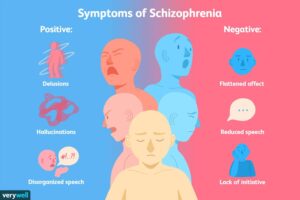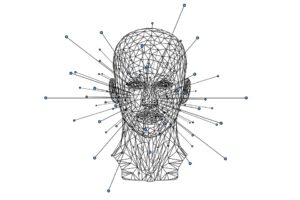
SDG 5: GENDER EQUALITY
Name- Shrutee Praharaj Enrollment number- 0791 DEMOGRAPHIC INDICATORS OF WOMEN IN ODISHA: AN ANALYSIS THROUGH THE LENS OF SDG 5 Introduction The 2030 Agenda for Sustainable Development, adopted by all United Nations member states in 2015, is a global blueprint aiming to achieve peace, prosperity, and sustainability for all. It calls for collective action to address critical global challenges- including poverty, inequality, climate change, and environmental degradation. Central to this agenda are the 17 Sustainable Development Goals (SDGs), which include 169 specific targets (United Nations, 2021). Among these, SDG 5 focuses on achieving gender equality and empowering all women and girls. Why SDG 5? Despite progress in reducing gender inequality, women and girls worldwide continue to face significant challenges. As per the United Nations website, in 56 countries, 20% of the girls between the ages of 15 to 19 years who have been in a sexual relationship have faced physical and/or sexual violence by their partners between the years 2015 and 2016. In 2017, 21% of women in the 20–24 age range or 650 million women were married before turning 18. In 30 countries, 1 in 3 15–19-year-old girls had been exposed to genital mutilation around 2017. Between 2000 and 2016, women performed house labour and worked as nurses in nearly 90 nations without receiving pay which was roughly three times that of men. Women are also paid 16% less than men (Küfeoğlu, 2022). SDG 5 Goals and Targets SDG 5 outlines several specific targets aimed at ending gender-based discrimination and violence, ensuring access to sexual and reproductive health rights, and promoting women’s participation in all aspects of society. Key targets include: 5.1 End all forms of discrimination against all women and girls everywhere 5.2 Eliminate all forms of violence against all women and girls in the public and private spheres, including trafficking and sexual and other types of exploitation 5.3 Eliminate all harmful practices, such as child, early and forced marriage and female genital mutilation 5.4 Recognise and value unpaid care and domestic work through the provision of public services, infrastructure and social protection policies and the promotion of shared responsibility within the household and the family as nationally appropriate 5.5 Ensure women’s full and effective participation and equal opportunities for leadership at all levels of decision-making in political, economic and public life 5.6 Ensure universal access to sexual and reproductive health and reproductive rights as agreed in accordance with the Programme of Action of the International Conference on Population and Development and the Beijing Platform for Action and the outcome documents of their review conferences 5.A Undertake reforms to give women equal rights to economic resources, as well as access to ownership and control over land and other forms of property, financial services, inheritance and natural resources, in accordance with national laws 5.B Enhance the use of enabling technology, in particular information and communications technology, to promote the empowerment of women 5.C Adopt and strengthen sound policies and enforceable legislation for the promotion of gender equality and the empowerment of all women and girls at all levels ((United Nations, n.d.) About Odisha The name “Odisha” originates from the Sanskrit term ‘Odra Vishaya’ or ‘Odra Desa,’ which referred to the ancient region located in the Mahanadi River valley and the lower Subarnarekha River. This area included what is now the districts of Cuttack and Sambalpur and part of Midnapore, bordered by Gondwana to the west, Jashpur and Singhbhum to the north, the sea to the east, and Ganjam to the south. Once a land of kings and kingdoms, modern Odisha is renowned for its abundant natural resources, intricate temple architecture, classical dance forms, diverse religious traditions, and vibrant fairs and festivals. Its handlooms, handicrafts, lush forests, rock caves, and scenic hills have long drawn the interest of historians and travellers alike. Odisha’s rich history, including its freedom movement and tribal culture—marked by dance, music, rituals, and traditions—continues to be a subject of research for historians and scholars globally (Ministry of Electronics & Information Technology, n.d.). Demographic Indicators The percentage of women in Odisha’s population has declined from 50.6% in 1951 to 49.46% in 2011, primarily due to male migration, especially in urban areas where the female population is lower at 48.23%, compared to rural areas at 49.71%. This urban-rural disparity indicates the need for policy interventions to balance the gender ratio in cities and address the underlying causes of gender imbalance, such as economic migration and societal norms. The sex ratio in Odisha, which stands at 979 females per 1000 males in 2011, is slightly better than the national average of 943, though urban areas have a lower ratio of 932. The higher ratio in rural areas (989 females per 1000 males) may be attributed to male outmigration for employment. While its sex ratio is relatively higher than many other Indian states, it still reflects deep-rooted gender biases and societal challenges, such as female foeticide, that need to be addressed to achieve true gender parity. The maternal mortality ratio (MMR) in Odisha has steadily improved, dropping from 424 per 100,000 live births in 1999-2001 to 222 in 2011-2013. This decline is largely the result of targeted health interventions, such as the National Rural Health Mission, which has improved access to maternal healthcare services in the state. Despite this progress, Odisha’s MMR remains above the national average, highlighting the need for continued efforts to provide quality maternal healthcare, especially in rural and underserved areas. Reducing MMR is critical for achieving SDG 5, as it directly impacts women’s health and well-being. Odisha has made significant strides in improving female literacy, with rates increasing from a mere 4.52% in 1951 to 64.36% in 2011. While urban female literacy peaks at a solid 80.42%, rural female literacy lags at 60.74%. This wide gap between urban and rural literacy rates points to the need for more focused efforts in rural education and empowerment programs. Increased literacy among women is essential for socioeconomic progress and directly correlates with better health outcomes, reduced fertility rates,









